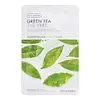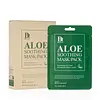What's inside
What's inside
 Key Ingredients
Key Ingredients

 Benefits
Benefits

 Concerns
Concerns

No concerns
 Ingredients Side-by-side
Ingredients Side-by-side

Water
Skin ConditioningGlycerin
Humectant1,2-Hexanediol
Skin ConditioningPanthenol
Skin ConditioningSodium Hyaluronate
HumectantDimethicone
EmollientXanthan Gum
EmulsifyingCarbomer
Emulsion StabilisingParfum
MaskingGlycereth-26
HumectantAllantoin
Skin ConditioningPersea Gratissima Fruit Extract
EmollientMethyl Glucose Sesquistearate
EmollientOryza Sativa Extract
AbsorbentPEG-60 Hydrogenated Castor Oil
EmulsifyingAlcohol Denat.
AntimicrobialTheobroma Cacao Seed Extract
AntioxidantNelumbium Speciosum Flower Extract
Skin ConditioningButyrospermum Parkii Butter
Skin ConditioningLaminaria Japonica Extract
Skin ProtectingBetaine
HumectantCyclopentasiloxane
EmollientPropanediol
SolventCitrus Paradisi Fruit Extract
Skin ConditioningPunica Granatum Fruit Extract
AntioxidantOlea Europaea Fruit Extract
BleachingEthylhexylglycerin
Skin ConditioningCalendula Officinalis Flower Extract
MaskingTrisodium EDTA
Acrylates/C10-30 Alkyl Acrylate Crosspolymer
Emulsion StabilisingCamellia Sinensis Leaf Extract
AntimicrobialSolanum Tuberosum Pulp Extract
SmoothingCaprylic/Capric Triglyceride
MaskingDipropylene Glycol
HumectantBambusa Vulgaris Extract
Skin ConditioningTrehalose
HumectantLecithin
EmollientButyrospermum Parkii Butter Extract
Skin ConditioningPentaerythrityl Tetraethylhexanoate
EmollientHoney Extract
HumectantCucumis Sativus Fruit Extract
EmollientPanax Ginseng Root Extract
EmollientHydrogenated Lecithin
EmulsifyingPotassium Hydroxide
BufferingAloe Barbadensis Leaf Extract
EmollientGanoderma Lucidum Extract
Skin ProtectingPhenoxyethanol
PreservativeCitrus Limon Fruit Extract
MaskingMelaleuca Alternifolia Leaf Extract
PerfumingPhaseolus Radiatus Seed Extract
Skin ConditioningVaccinium Angustifolium Fruit Extract
Skin ProtectingButylene Glycol
HumectantDisodium EDTA
Tromethamine
BufferingWater, Glycerin, 1,2-Hexanediol, Panthenol, Sodium Hyaluronate, Dimethicone, Xanthan Gum, Carbomer, Parfum, Glycereth-26, Allantoin, Persea Gratissima Fruit Extract, Methyl Glucose Sesquistearate, Oryza Sativa Extract, PEG-60 Hydrogenated Castor Oil, Alcohol Denat., Theobroma Cacao Seed Extract, Nelumbium Speciosum Flower Extract, Butyrospermum Parkii Butter, Laminaria Japonica Extract, Betaine, Cyclopentasiloxane, Propanediol, Citrus Paradisi Fruit Extract, Punica Granatum Fruit Extract, Olea Europaea Fruit Extract, Ethylhexylglycerin, Calendula Officinalis Flower Extract, Trisodium EDTA, Acrylates/C10-30 Alkyl Acrylate Crosspolymer, Camellia Sinensis Leaf Extract, Solanum Tuberosum Pulp Extract, Caprylic/Capric Triglyceride, Dipropylene Glycol, Bambusa Vulgaris Extract, Trehalose, Lecithin, Butyrospermum Parkii Butter Extract, Pentaerythrityl Tetraethylhexanoate, Honey Extract, Cucumis Sativus Fruit Extract, Panax Ginseng Root Extract, Hydrogenated Lecithin, Potassium Hydroxide, Aloe Barbadensis Leaf Extract, Ganoderma Lucidum Extract, Phenoxyethanol, Citrus Limon Fruit Extract, Melaleuca Alternifolia Leaf Extract, Phaseolus Radiatus Seed Extract, Vaccinium Angustifolium Fruit Extract, Butylene Glycol, Disodium EDTA, Tromethamine
Aloe Barbadensis Leaf Water
MaskingWater
Skin ConditioningCamellia Sinensis Leaf Water
MaskingGlycerin
HumectantPentylene Glycol
Skin ConditioningSodium PCA
HumectantAloe Barbadensis Leaf Extract
EmollientSodium Hyaluronate
HumectantBeta-Glucan
Skin ConditioningCucumis Sativus Fruit Extract
EmollientButylene Glycol
HumectantXanthan Gum
EmulsifyingMicrocrystalline Cellulose
AbsorbentSodium Gluconate
Skin ConditioningBetaine
Humectant1,2-Hexanediol
Skin ConditioningPropanediol
SolventDipotassium Glycyrrhizate
HumectantCellulose Gum
Emulsion StabilisingAloe Barbadensis Leaf Water, Water, Camellia Sinensis Leaf Water, Glycerin, Pentylene Glycol, Sodium PCA, Aloe Barbadensis Leaf Extract, Sodium Hyaluronate, Beta-Glucan, Cucumis Sativus Fruit Extract, Butylene Glycol, Xanthan Gum, Microcrystalline Cellulose, Sodium Gluconate, Betaine, 1,2-Hexanediol, Propanediol, Dipotassium Glycyrrhizate, Cellulose Gum
 Reviews
Reviews

Ingredients Explained
These ingredients are found in both products.
Ingredients higher up in an ingredient list are typically present in a larger amount.
1,2-Hexanediol is a synthetic liquid and another multi-functional powerhouse.
It is a:
- Humectant, drawing moisture into the skin
- Emollient, helping to soften skin
- Solvent, dispersing and stabilizing formulas
- Preservative booster, enhancing the antimicrobial activity of other preservatives
Aloe Barbadensis Leaf Extract is an extract of the leaves of the aloe, Aloe barbadensis, Liliaceae.
Aloe is one of the most well-known natural soothing ingredients, and for good reason. It’s full of water and has a cooling, calming effect on the skin, especially when it’s sunburned, itchy, or irritated. Aloe also helps your skin stay hydrated and smooth by mimicking what healthy skin naturally produces. On top of that, it contains vitamins and nutrients that support skin recovery.
It doesn’t protect you from the sun, but it can help your skin bounce back after too much time in it.
Let’s get into the details:
Aloe contains antioxidant Vitamins A, C, and E, which help fight off free radicals (unstable molecules from things like pollution that can damage your skin).
It’s also rich in polysaccharides, which are natural sugars that help hydrate the skin by acting like the skin’s own moisturizing agents. These, along with other sugars like monosaccharides, help form a protective barrier that locks in moisture.
Aloe works as both a humectant and an emollient. That means it draws water into the skin (humectant) and helps trap it there (emollient), making it an effective natural moisturizer.
You’ll also find a mix of other skin-supporting ingredients in aloe, including folic acid, choline, calcium, amino acids, fatty acids, and even Vitamin B12.
Out of the 420+ species of aloe, Aloe barbadensis is the most widely used in skincare products thanks to its gentle yet effective properties.
There are over 420 species of aloe but Aloe Barbadensis is the most commonly used for topical products.
Learn more about Aloe Barbadensis Leaf ExtractBetaine is a common humectant (a substance that promotes retention of moisture). It's known to be gentle on the skin and can help balance hydration.
This ingredient is best for improving hydration and soothing irritated skin. Studies also show it helps even out skin tone.
Fun fact: Betaine is naturally created in the skin and body. The kind found within cosmetic products can be either plant-derived or synthetic.
Another name for betaine is trimethylglycine.
Learn more about BetaineButylene Glycol (or BG) is used within cosmetic products for a few different reasons:
Overall, Butylene Glycol is a safe and well-rounded ingredient that works well with other ingredients.
Though this ingredient works well with most skin types, some people with sensitive skin may experience a reaction such as allergic rashes, closed comedones, or itchiness.
Learn more about Butylene GlycolThis extract comes from cucumber. Cucumbers are mostly made up of water (95%), and the other 5% is composed of: vitamin C, caffeic acid, fatty acids, amino acids, and other minerals.
Cucumbers have anti-inflammatory, barrier repair, and hydrating properties.
They contain shikimate dehydrigenase, an enzyme shown to help reduce inflammation and soothe the skin.
The amino acids found in cucumbers help nourish our skin's natural acid mantle (it's an important part of our skin barrier). This slightly acidic film acts as a barrier to protect us from bacteria, viruses, and other contaminants.
Unless you have an allergy to cucumbers, this is generally a non-irritating ingredient.
Fun fact: Cucumis Sativus is native to South Asia and can now be found on every continent.
Learn more about Cucumis Sativus Fruit ExtractGlycerin is already naturally found in your skin. It helps moisturize and protect your skin.
A study from 2016 found glycerin to be more effective as a humectant than AHAs and hyaluronic acid.
As a humectant, it helps the skin stay hydrated by pulling moisture to your skin. The low molecular weight of glycerin allows it to pull moisture into the deeper layers of your skin.
Hydrated skin improves your skin barrier; Your skin barrier helps protect against irritants and bacteria.
Glycerin has also been found to have antimicrobial and antiviral properties. Due to these properties, glycerin is often used in wound and burn treatments.
In cosmetics, glycerin is usually derived from plants such as soybean or palm. However, it can also be sourced from animals, such as tallow or animal fat.
This ingredient is organic, colorless, odorless, and non-toxic.
Glycerin is the name for this ingredient in American English. British English uses Glycerol/Glycerine.
Learn more about GlycerinPropanediol is an all-star ingredient. It softens, hydrates, and smooths the skin.
It’s often used to:
Propanediol is not likely to cause sensitivity and considered safe to use. It is derived from corn or petroleum with a clear color and no scent.
Learn more about PropanediolSodium Hyaluronate is hyaluronic acid's salt form. It is commonly derived from the sodium salt of hyaluronic acid.
Like hyaluronic acid, it is great at holding water and acts as a humectant. This makes it a great skin hydrating ingredient.
Sodium Hyaluronate is naturally occurring in our bodies and is mostly found in eye fluid and joints.
These are some other common types of Hyaluronic Acid:
Learn more about Sodium HyaluronateWater. It's the most common cosmetic ingredient of all. You'll usually see it at the top of ingredient lists, meaning that it makes up the largest part of the product.
So why is it so popular? Water most often acts as a solvent - this means that it helps dissolve other ingredients into the formulation.
You'll also recognize water as that liquid we all need to stay alive. If you see this, drink a glass of water. Stay hydrated!
Learn more about WaterXanthan gum is used as a stabilizer and thickener within cosmetic products. It helps give products a sticky, thick feeling - preventing them from being too runny.
On the technical side of things, xanthan gum is a polysaccharide - a combination consisting of multiple sugar molecules bonded together.
Xanthan gum is a pretty common and great ingredient. It is a natural, non-toxic, non-irritating ingredient that is also commonly used in food products.
Learn more about Xanthan Gum